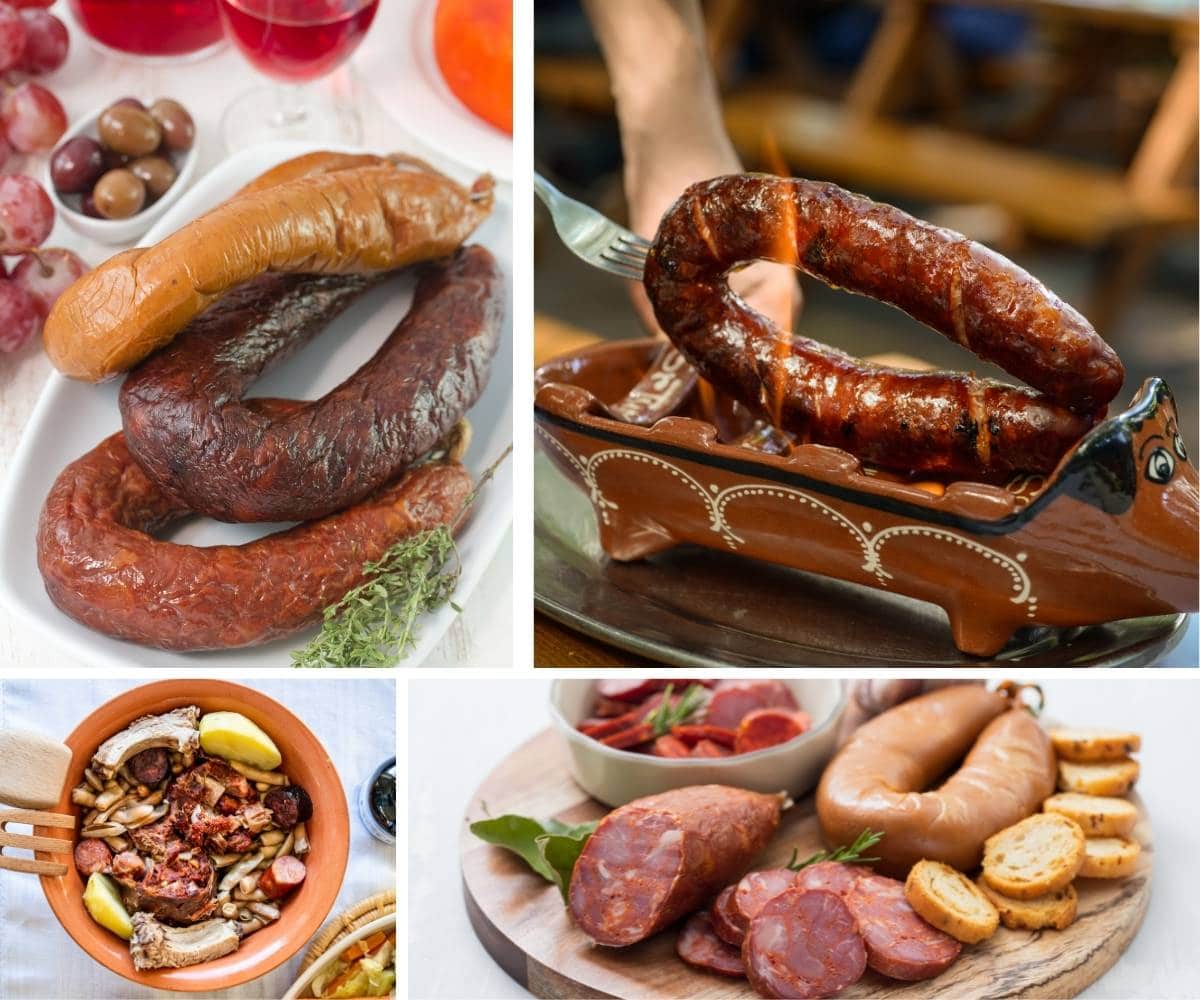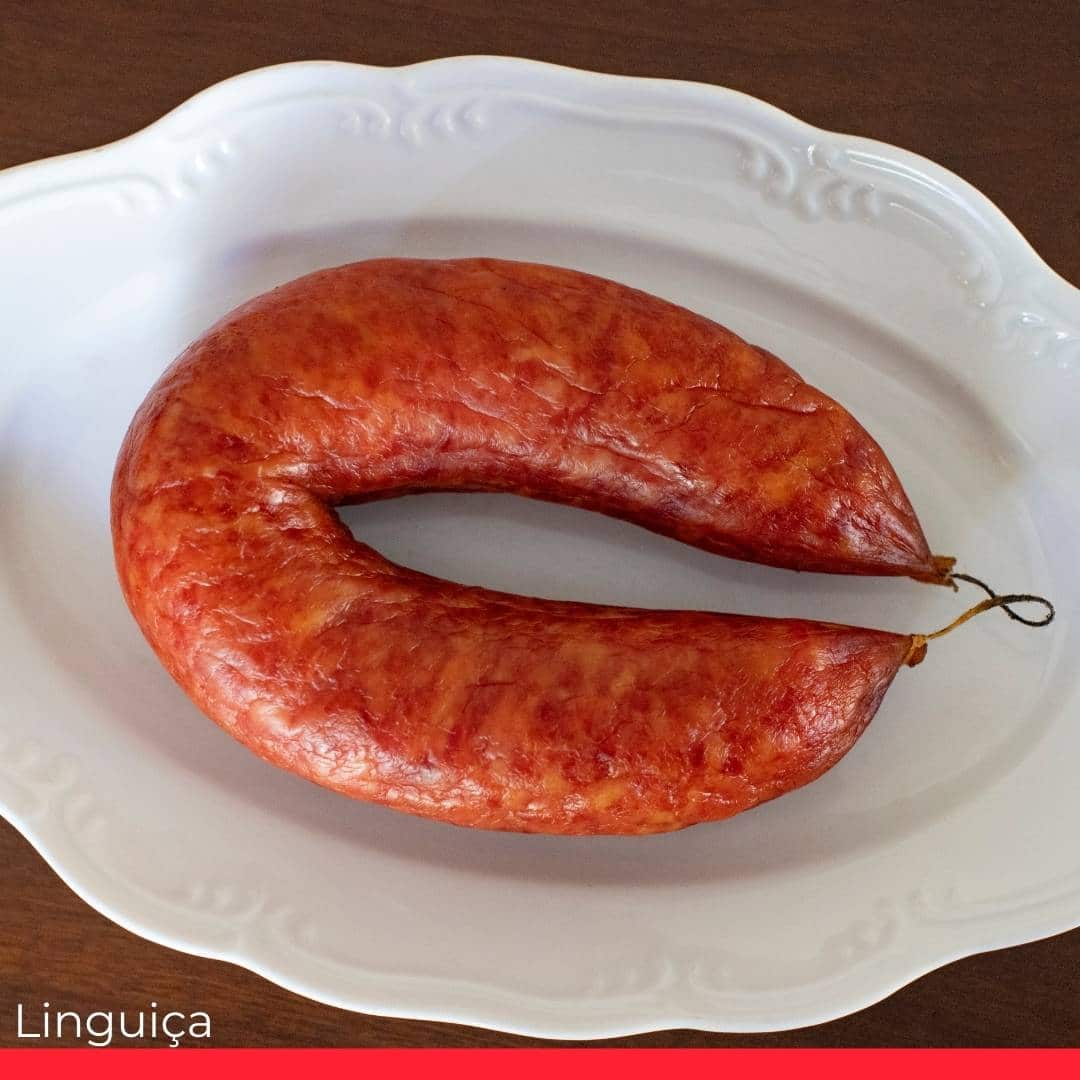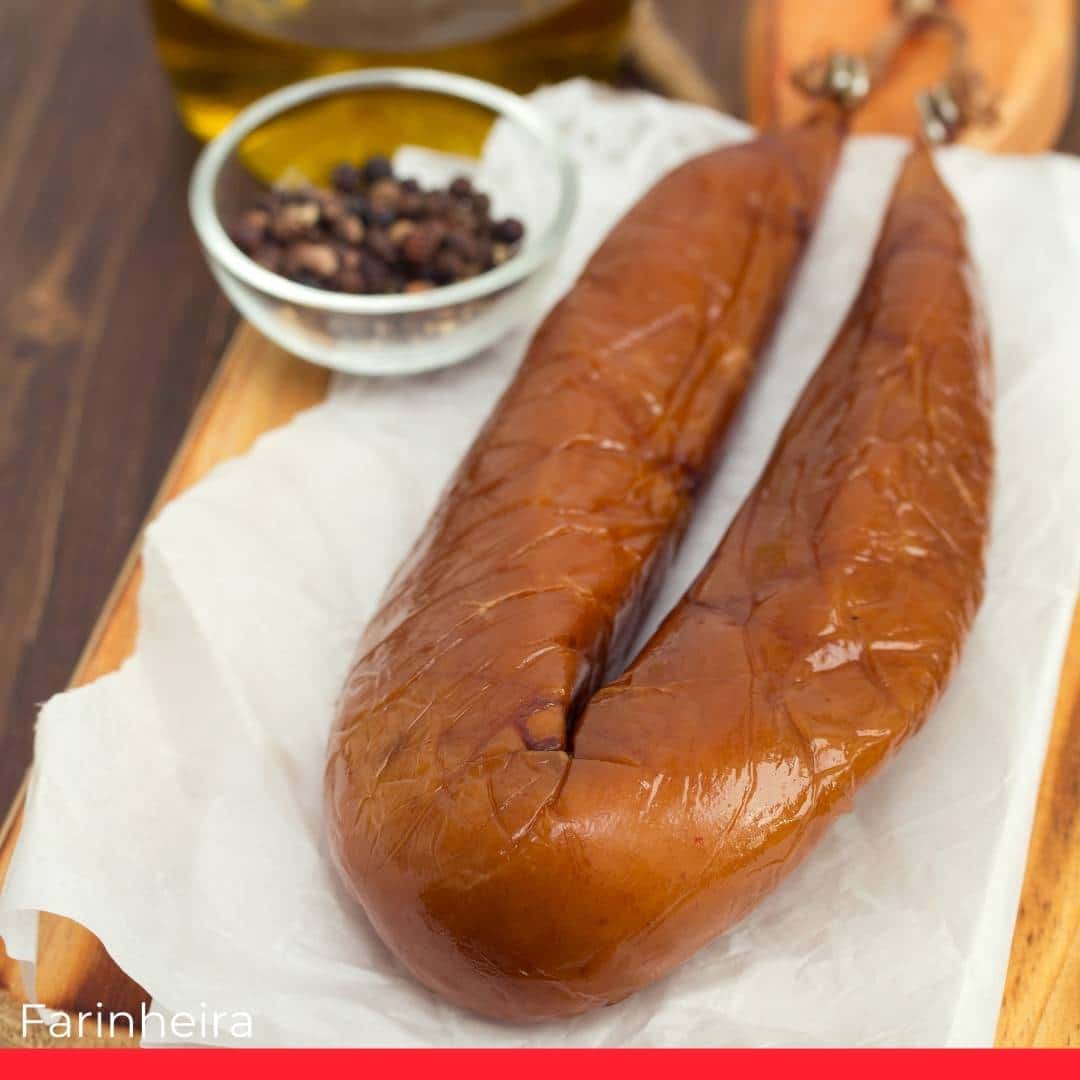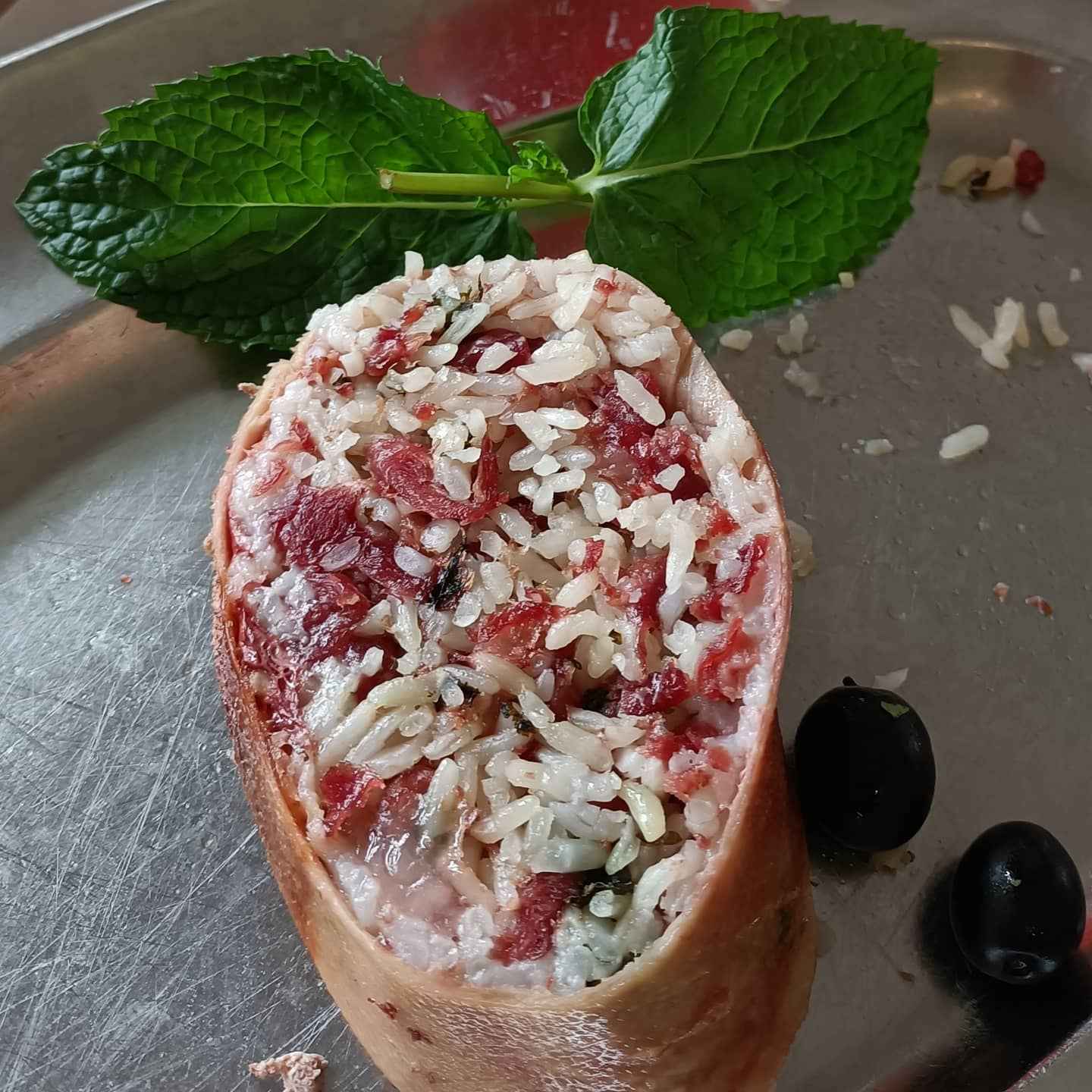11 Delicious Portuguese Sausages & Charcuterie

Portugal has an extensive and diverse selection of charcuterie products that are associated with each of the regions of the country and with the Mediterranean diet.
Traditional sausages and cured meats abound, with recipes that vary according to local traditions. Each region has a unique agricultural production system, a wide range of local resources and traditions, and associated knowledge that result in very particular products. Thus, when it comes to Portuguese sausages, there are many varieties for you to try.
Sausages define our Portuguese gastronomy. Without them, the Feijoada wouldn’t be the same, the Cozido à Portuguesa wouldn’t be as good, and the barbecues would be seriously lacking.
It is believed that the Portuguese people were the first to domesticate wild pigs, around 15,000 years ago, which in part helps to explain the rich gastronomy we have around pork, such as chorizo, alheira, and so much more.
Portuguese sausages, better known as enchidos, can be consumed cold, grilled, fried, or roasted. Since the meat is already heavily seasoned, the sausages make a meal in themselves and go very well simply with good bread and wine. In fact, that’s a very common Portuguese lunch.
So, in this short guide, we will see the most famous Portuguese sausages, what they are made of, and much more.
1. Chouriço

Chouriço, or chorizo, is one of the most diverse examples of our traditional sausages. There are even some unusual fillings in Portugal, such as pumpkin (chouriço de abóbora, from Barroso-Montalegre) and blood and honey (chouriço doce de Vinhais, very popular).
In general, the most common varieties of chorizo are made with pork and fat, often from indigenous breeds such as the Bísaro or Alentejano, whose meat is seasoned with paprika, wine, and garlic and then smoked for a few days or weeks.
The Moorish chorizo, a variety from the south of Portugal, is made with blood or bloody pork meat, which gives it a dark color similar to black pudding. In terms of flavor, it is delicate and not very salty, with aromatic fat.
Chouriço is used in stir-fries, baked in the oven or microwave, or cooked in a chorizo roaster (a clay roaster, where ethyl alcohol is used as fuel to bake the sausages).
2. Linguiça

Linguiça is a more slender sausage than chouriço, made with red and white meat, garlic, and various spices. These sausages can often be spicy, so it’s always a good idea to make sure you’re buying the right kind.
It is one of the sausages that have gained popularity throughout Europe and Brazil. Some varieties of this sausage contain mutton, beef, or even fish or seafood.
3. Alheira

Alheira is a characteristically Northern sausage, the most famous being those from the regions of Mirandela, Vinhais, and Montalegre. Traditionally, alheira’s main ingredients are pork, chicken, olive oil, bread, and seasonings such as salt, garlic, and sweet or spicy peppers. There are also game alheiras, which may contain hare, pheasant, duck, or partridge.
For its final stage of preparation, alheira is put in a smokehouse, where it loses its water content and obtains aromas of wood smoke. The different combinations of seasonings and smoking time make different types of alheiras.
One of the peculiarities of alheira is that the inside is not homogenous and solid like most sausages, but instead it is a paste made of meat and bread.
Alheira should be eaten grilled, fried, or roasted. It may not be the most popular, but the most traditional way of serving this sausage is by roasting it and serving it with boiled potatoes and greens.
4. Beloura

Beloura is a Minho (in the north of Portugal) specialty that is rarely seen outside the region. It’s not exactly a sausage or cured meat, but more like a mix of black pudding and a loaf of bread.
The recipe calls for rye, corn, and wheat flour that is kneaded with yeast, blood, and sarrabulho, cooking water, along with pepper and cumin. It is leavened, molded, and cut and then cooked in water seasoned with garlic, salt, and bay leaf.
Despite some resemblance to bread, you cannot eat it with butter. The beloura must be cut into thin slices and fried in lard, and it usually goes with a popular dish: Rojões à moda do Minho.
5. Butelo

Butelo, or bucho as we like to call it, is another sausage from the North (Bragança).
The Portuguese people joke that it has a very unique aspect: it can be used as a throwing weapon. This is because butelo is also known as bone chorizo as it is made up of vertebrae and pork ribs, as well as cartilage and meat, enclosed within a stomach (bucho), bladder, or pig tripe, tied with cotton thread.
For seasoning, salt, pepper, bay leaf, garlic, and wine are used. It is smoked for a few weeks and left to cure in the cold. It’s big (1–2 kg) and not very pretty to look at. However, after slow cooking, we have a feast of tender meat, not too salty, and with a predominant aroma of pepper.
It is traditionally used in bean stew.
6. Farinheira

Farinheira is one of the most popular Portuguese sausages, even among people who do not normally appreciate this traditional product. It is also one of the most unusual sausages on our menu for two reasons: it is not made from meat, and it is orange in color.
It is made from very finely chopped pork fat, which is marinated for a few days in white wine, red pepper paste, salt, and garlic. Then, it is wrapped in wheat flour and boiled. Afterward, more white wine is added and, in some regions, orange juice. After being stuffed into beef tripe, it is lightly cooked and dried in a smokehouse.
Farinheira has a mild and very delicate flavor; it is aromatic and not very salty, with a velvety greasiness that complements a texture that is usually not very firm.
7. Maranho (Goat Sausages)

Maranho is one of the most unique fresh sausages in Portugal, as its main ingredient is goat (or lamb) rather than pork. Originally from Proença-a-Nova, it has become a typical dish in the Beira Baixa region.
This sausage is made by stuffing a goat’s (or sheep’s) stomach with goat meat (or lamb), bacon, chorizo, ham, rice, white wine, olive oil, and mint. Its flavor is more intense than that of other sausages due to the intensity of the goat (lamb), which is counterbalanced by the aroma of mint.
As it is a fresh sausage, it should be consumed shortly after being produced. It should always be cooked, either by boiling or oven roasting.
8. Morcela

One cannot speak of morcela strictly as a single product, but rather as a family of sausages made with very particular ingredients. Generally, they include blood, bloody flesh, and fat. You can also add onions, rice, bread, and even oranges.
In terms of seasoning, it is common, but not mandatory, for these sausages to be seasoned with cumin and cloves. Most are scalded and then dried in a smokehouse. As the varieties of morcela are extensive (we can find variations in different regions like Portalegre, Guarda, Borba, Ilhas, etc.), it is difficult to characterize them as a whole.
A good morcela should be concentrated in a flavor that is not bloody but almost sweet; it should have a crispy skin when fried or grilled and a soft and aromatic interior, with the fat well melted but never dry. It goes naturally with everything cooked, meat or vegetables, and it shines when eaten with bread or cornbread.
9. Paio

Paio do lombo is a sausage that is widely produced in the South, especially in Barrancos and Beja. In these regions, mainly pork loin is used, but some varieties may be garnished with meat from the leg. As usual, it has plenty of salt, pepper, and garlic, and chili paste may or may not be part of the recipe.
Another particular variety, the paio branco, is typical of the Alentejo and differs in color, which is very light, and coating. It is mainly pork loin, seasoned only with salt and garlic and coated with cooked pork peritoneum and then just dried in the air without going into a smokehouse.
The meat is very soft, and it is easy to slice it. It is usually eaten with bread.
10. Salpicão

This voluminous and compact sausage consists of pieces of pork loin (and sometimes also leg) and is marinated for several days in seasonings such as red or white wine, garlic, salt, pepper, bay leaf, and paprika. The meat fills a cylindrical section of the large intestine, which is tied with cotton thread. The sausage is then slowly dried in a smokehouse.
The salpicão Alentejano and the salpicão from Trás-os-Montes stand out. When tasting a salpicão, the flavor of smoke and salt predominates and then, timidly, the wine and pepper appear. The sausage has a firm, thin texture and very little unctuousness.
11. Cacholeira

Cacholeira is a typical sausage from Alentejo, especially from the region of Portalegre. It is the use of offal, especially pork liver, that makes it so special, but it can also be made with kidney, pancreas, spleen, or heart, as well as fat.
It is primarily seasoned with salt and garlic, but wine or cumin can be added, too. To prepare the sausage for eating, you must first scald it in water, and then, preferably, roast or boil it. It is a true delicacy, a smooth and salty sausage that is aromatic and very balanced in terms of fat.
Charcuterie family
Portuguese sausages are an important part of Portuguese gastronomy, but they do not completely dominate this corner of our cuisine. Here are a few other examples of charcuterie products made with pork that are both very popular in the country and must-haves for a well-rounded charcuterie board.
Presunto e Paleta

Presunto is one of the most essential snacks in Portuguese taverns. Though it is not a sausage, it makes use of pork and is an indispensable part of the Portuguese charcuterie family.
It is important to note that the names presunto and paleta refer to products made the same way but using different parts of the animal: presunto means the hind legs, while the paleta is confined to the front legs.
For presunto or paleta, a whole leg of pork is salted, washed, dried (with or without being smoked), and then aged. This is the most critical factor in the development of the flavor of presunto and paleta, during which a series of biochemical processes take place that make this cold cut a textural, olfactory, and gustatory feast. And within certain limits, the older it is, the better.
A good presunto or paleta should be cut into very thin slices, revealing the transparency of the meat, the greasiness of the fat, and the delicate aroma that reminds you of fruit, caramel, butter, and nuts. The presunto and paleta from Alentejo pigs are among those with greater sensory complexity than those from Santana da Serra and Barrancos. The best presunto in the North, such as those from Lamego and Marão, use more of the Bísara breed.
Pernil

Smoked Pernil is a seasoned and smoked pork knuckle. It is usually soaked and then baked. Simplicity is enough, as it becomes a delight with different textures that vary between tender meat, gelatinous collagen, and crispy skin.
Orelheira e Focinho de Porco

Half a pig’s face is dipped in brine and then hung to dry, until ready, in a smokehouse with holm wood. You can find orelheira in many traditional dishes such as Feijoada à Transmontana and Cozido à Portuguesa, but it can also be eaten as a snack.
In terms of taste, you will find a wide variety according to the region and the seasoning. The snout resembles pork belly but with less meat, while the ear is dominated by the texture of the cartilage. In any case, it is smoked, smooth but highly textural due to the collagen, and very buttery.
Related: 25 Most Popular Portuguese Foods
Related: Most Popular Portuguese Desserts
Related: Most Popular Portuguese Christmas Foods
Related: Popular Portuguese Breakfast Foods


